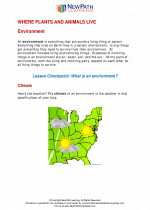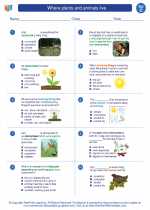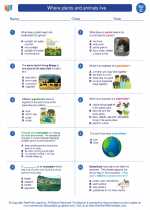Reflection in Science
Reflection in science refers to the bouncing back of light, sound, or heat energy when it encounters a surface. This phenomenon occurs when waves encounter a boundary or obstacle and are redirected back into the medium they came from. Reflection plays a crucial role in various scientific fields, including optics, acoustics, and thermodynamics.
Types of Reflection
There are two primary types of reflection:
- Regular Reflection: This occurs when parallel light, sound, or heat rays hit a smooth and polished surface, such as a mirror, and bounce off at the same angle.
- Diffuse Reflection: This occurs when parallel rays hit a rough or irregular surface and scatter in different directions.
Key Concepts to Understand
When studying reflection, it's essential to grasp the following concepts:
- Incident Ray: The incoming ray of light, sound, or heat energy that strikes a surface.
- Reflected Ray: The ray that bounces off the surface after the incident ray hits it.
- Normal: An imaginary line perpendicular to the surface at the point where the incident ray strikes it. The angle of reflection is measured relative to this line.
- Angle of Incidence: The angle formed between the incident ray and the normal.
- Angle of Reflection: The angle formed between the reflected ray and the normal, equal to the angle of incidence for regular reflection.
Applications of Reflection
Reflection has numerous practical applications in everyday life and various scientific fields, including:
- Optical Devices: Mirrors, lenses, and other optical instruments rely on reflection to form images and magnify objects.
- Acoustic Engineering: Sound waves are reflected to create echoes and improve the quality of sound in architectural designs.
- Thermal Insulation: Heat energy can be reflected to minimize heat loss or gain in buildings and industrial processes.
Study Guide
To master the concept of reflection, consider the following study guide:
- Learn and understand the definition of reflection and its significance in science.
- Practice identifying examples of regular and diffuse reflection in everyday surroundings.
- Master the principles of incident rays, reflected rays, angles of incidence and reflection, and the concept of a normal.
- Explore real-world applications of reflection and how it impacts various scientific disciplines.
- Engage in hands-on experiments or demonstrations involving reflection, such as using mirrors, prisms, or sound-reflecting surfaces.
◂Science Worksheets and Study Guides Third Grade. Where plants and animals live
Study Guide Where plants and animals live
Where plants and animals live  Worksheet/Answer key
Worksheet/Answer key Where plants and animals live
Where plants and animals live  Worksheet/Answer key
Worksheet/Answer key Where plants and animals live
Where plants and animals live  Worksheet/Answer key
Worksheet/Answer key Where plants and animals live
Where plants and animals live  Vocabulary/Answer key
Vocabulary/Answer key Where plants and animals live
Where plants and animals live  Vocabulary/Answer key
Vocabulary/Answer key Where plants and animals live
Where plants and animals live 

 Worksheet/Answer key
Worksheet/Answer key
 Worksheet/Answer key
Worksheet/Answer key
 Worksheet/Answer key
Worksheet/Answer key
 Vocabulary/Answer key
Vocabulary/Answer key
 Vocabulary/Answer key
Vocabulary/Answer key

The resources above cover the following skills:
LIFE SCIENCE
Unity and Diversity
Construct an argument from evidence to explain the likelihood of an organism’s ability to survive when compared to the resources in a certain habitat (e.g., freshwater organisms survive well, less well, or not at all in saltwater; desert organisms survive well, less well, or not at all in woodlands).
Create models that illustrate how organisms and their habitats make up a system in which the parts depend on each other.